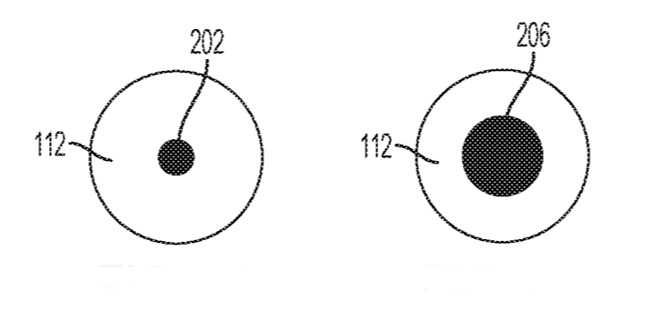The part of the first Apple Pencil that became a Lightning connector, was at one point under consideration to host a screen showing statuses such as whether the stylus would paint or draw a line -- and future ones may yet adopt this.

Originally the end of the Apple Pencil was to have a screen -- and future ones may yet.
A newly-revealed patent for the Apple Pencil includes details going back to 2013 where designs featured a screen that would automatically update to reflect what the stylus would do in use. If the user had tapped on an iPad screen to select, say, the paintbrush tool in an app, the screen would show "a graphic corresponding to a paint brush output."
Similiarly, "Dynamic visual indications for input devices" says that this screen could show icons ranging from "a solid line" to "a star tip." As with other patents and patent applications, this design could feature an indication of the color that the Pencil would draw in the app.
"Some input devices, such as styli, allow a user to use the input device as a pen or pencil and 'write' on the touch screen or other input-ready display," says the patent. "Often the output of a stylus, as displayed on the screen, may be varied."

A screen could show an icon indicating the size of line that the Pencil will draw
"For example, the color or line thickness corresponding to the input of the stylus may be varied," it continues. "These variations are typically done by the computing device and thus the user may not know what the output of the input device will be until the output is displayed on the screen."
That's a curious way of describing it, though, as in reality the variations are typically done on the computing device by the user. If you've just tapped a paintbrush icon, then chosen red, you'd have to be pretty distracted to need to look at the end of the Pencil to see what it was going to do.
However, only the giant majority of the patent is specifically about this screen -- which might be at the tip, or might run along the body of the Pencil as with a previous patent regarding a "transparent" screen. In one small part, the patent also proposes including a control on the Pencil to change what it does.
Similar to the old ballpoint pens that came with multiple colored inks that you clicked in and out, this control might change between paintbrush or line, or between different colors.
Clearly, Apple decided against either the control or the screen, and instead used the end of the Apple Pencil for its Lightning charging connector. The second generation Apple Pencil, though, moved to wireless charging, freeing up that end of the device.
Consequently, while the original patent was filed in May 2013, it's being granted now in 2020 at least makes it possible that Apple may revisit the idea in a future device.
The patent is credited to Christopher J. Stringer, whose previous work includes an unrelated patent regarding more secure ear-fitting for AirPods.